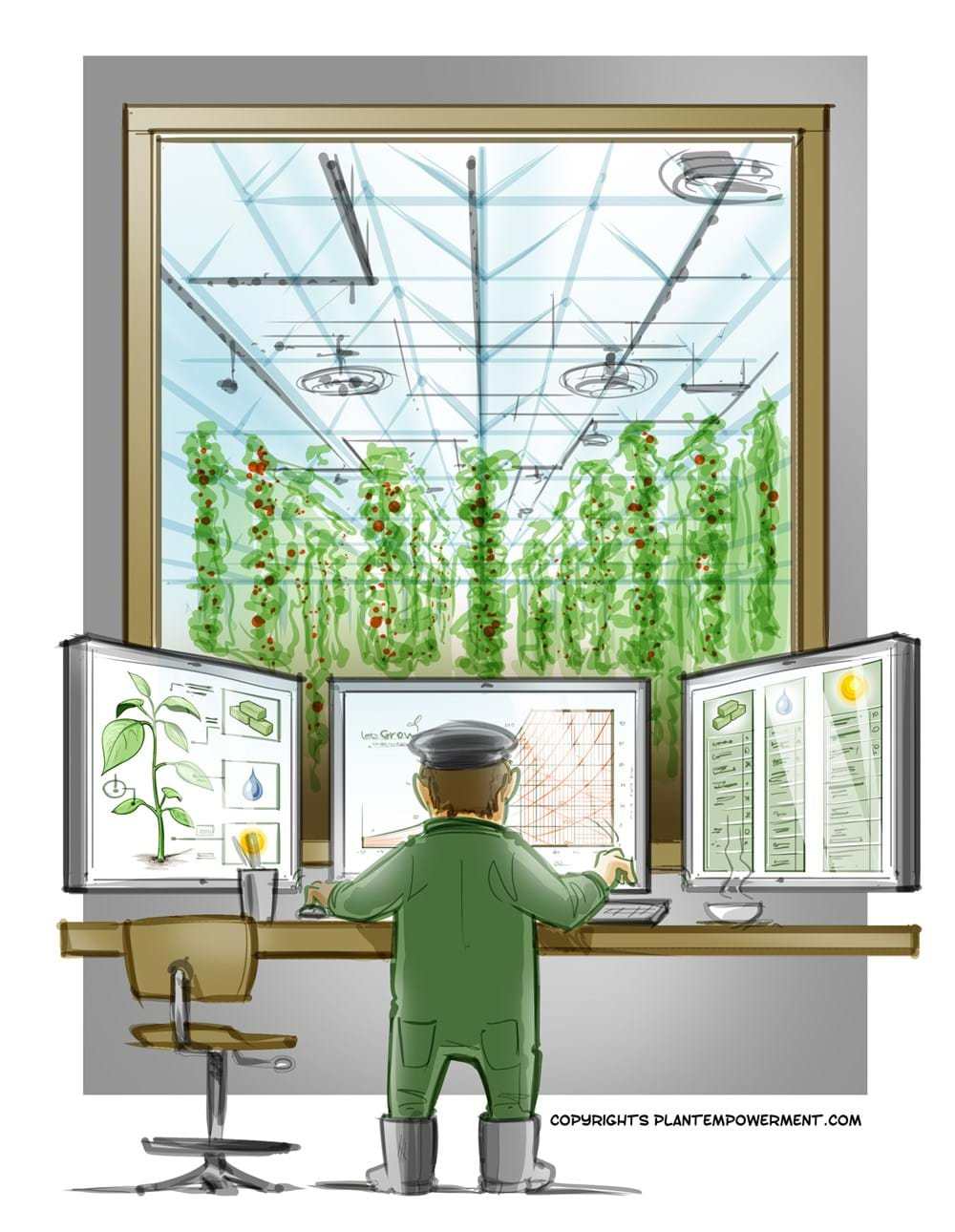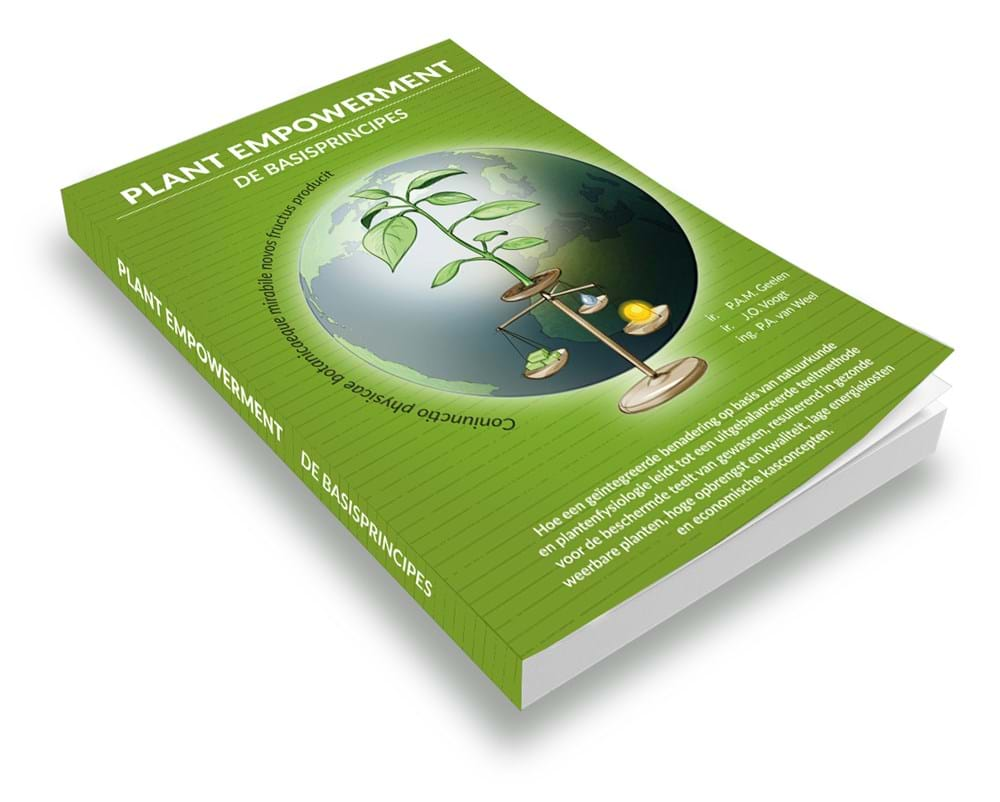Plant Empowerment - Investors do not step into a black box
It all started with a book about new cultivation and plant empowerment which then grew into a partnership of six top companies and educational institutions from the greenhouse horticulture industry. The alliance of these six companies combined their knowledge, expertise, and experience to form Growing by Plant Empowerment, a platform with a data-driven cultivation philosophy, which ultimately leads to higher productions and better quality.
Plant Empowerment - The basic principles
Peter Hendriks wears three hats in daily life. He leads Hoogendoorn Growth Management and LetsGrow.com, two companies included in the high-tech group Batenburg that focus on greenhouse horticulture, and serves as the driving force behind the Plant Empowerment foundation. He is even wearing the Plant Empowerment cap for this interview.
The June 2019 Telen&trends magazine (issue 13, pp. 33/35) wrote for the first time about the book, Plant Empowerment: The Basic Principles, and the companies that support its principles. Two years later, the first results are available and demonstrate the consistent use of the cultivation principles as stated in the book. In addition to an English version, the book has also been printed in Dutch and Spanish.
To correctly highlight this cultivation principle abroad, six top horticultural companies have joined as Implementation Partners of Plant Empowerment. We have decided to form a foundation for this collaboration, says Hendriks at his office in Vlaardingen. "We are thus better able to invest in Growing by Plant Empowerment (GPE) jointly.
Now we don't have to argue about money to set up a joint seminar because there is an established budget. We shared our knowledge through this platform, and you can see that the collaboration has grown in recent years. We have found a suitable model."
Letting young growers work from data
The core strength of Hendriks and his team is persuasion. Greenhouse horticulture may become a high-tech industry, and sometimes it already is, but it is still difficult to change ingrained behavior. Growers first have to see, feel, weigh, and taste it, and only then do they believe that GPE is a suitable cultivation method.
During the conversation, Hendriks regularly repeats the word ‘behavioral change’. In distant Querétaro, 200 kilometers northwest of Mexico City, Robert van der Geest dared to apply GPE. This Dutchman was Commercial Director (CCO) at United Farms and set to work with the basic principles in several greenhouses in his 65.5 ha complex. After two years, the outcome was clear: it resulted in a significant reduction in resource use and a 15 percent increase in net profit. "It was our first international test," says Hendriks.
"We achieved good results through strong collaboration with the customer. At the moment, the plan is for all of United Farms to switch to the principles of GPE. And also make the investments for it."
Hendriks says that it started with an inexperienced team of young Mexican growers who began working from the data. He proudly reports that they adopted it. "They just came to see. Their behavior was still adaptable. We taught them all facets of data-driven growing."

The other demonstration took place at BASF Vegetable Seeds. Only this was not about growing tomatoes, but lettuce. In this scenario too, Hendriks reports that the results were favorable:
"We also wanted to apply GPE to another crop. The great thing about GPE is that it doesn't matter what you grow, where you grow, or what type of greenhouse you grow in; the principles remain the same. We achieved excellent results in BASF's demo greenhouse: 20 percent more yield in the winter period."
" It was our first international test. We have achieved good results thanks to the intensive cooperation with the customer."
The arrival of more and more venture capital
Due to the increasing demand for healthy and sustainably grown vegetables, the size of greenhouses worldwide is increasing. The scale of today's complexes is enormous, and you can only manage them out of a central control room.
Growing by Plant Empowerment is following this development. "Of course, you have to have growers with knowledge of cultivation in the greenhouses, but with surfaces of 60 ha and more, arranging can only be done centrally", according to Hendriks.
But another development is unfolding: the arrival of more and more venture capital to make those very expensive high-tech greenhouses possible. Investors finance these complexes, just like Equilibrium Capital Group does at United Farms, eventually reaching 80 hectares.
"INVESTORS WANT A GUARANTEED RETURN ON THEIR INVESTMENTS."
Equilibrium is now an experienced North American investor in greenhouse horticulture. It is the first investment outside the US for the American financier, but it does not invest a peso in what Hendriks calls a black box. "Investors want to understand and guarantee a return on their investments. GPE makes it understandable, but also feasible and scalable."
A focus on several countries
This means that the level of knowledge regarding data fields needs to increase significantly within the greenhouses, says Hendriks. LetsGrow.com now employs about fourteen data analysts and trainers who guide growers in data-driven working. Skilled growers with traditional 'green fingers' are becoming scarcer, but the younger generation is interested in data.
"We would say to that investor, build a central control room in the complex and immediately train the new generation in data-driven cultivation. Incidentally, I do not believe in autonomous cultivation. You will always need someone with knowledge in the greenhouse. It remains a living product."
The GPE methodology and the book have now found their way to Dutch and foreign lecture halls. "In the Netherlands, HAS students are already working with this book. When they finish school, the new generation of growers will know how to apply data to achieve even better cultivation results", says Hendriks.
The Implementation Partners of Plant Empowerment are now also active on several other continents.
"We have designated focus countries such as Canada, America, and Russia," Hendriks continues. "We support the adoption of the principles through example projects. What you often hear: 'It doesn't work for us. Because...!’ When we say it works in the Netherlands, in Mexico, 'it's much warmer here'. In Mexico, it works; they say in Russia, 'it's way too cold here.' That is why we apply GPE in different climate zones to answer these questions."
Plant Empowerment Foundation |
|
In Growing by Plant empowerment, everything is focused on plant balances. The conditions in a greenhouse must be such that the plant does not experience stress and therefore efficiently handles light, water, nutrients, and CO2. There are three plant balances (water, energy, and assimilates balance) and three greenhouse balances (humidity, energy, and CO balance). The Implementation Partners consist of the following companies: Cultilene, Hoogendoorn, Svensson, LetsGrow.com, Hortilux, and Koppert Biological Systems. |
